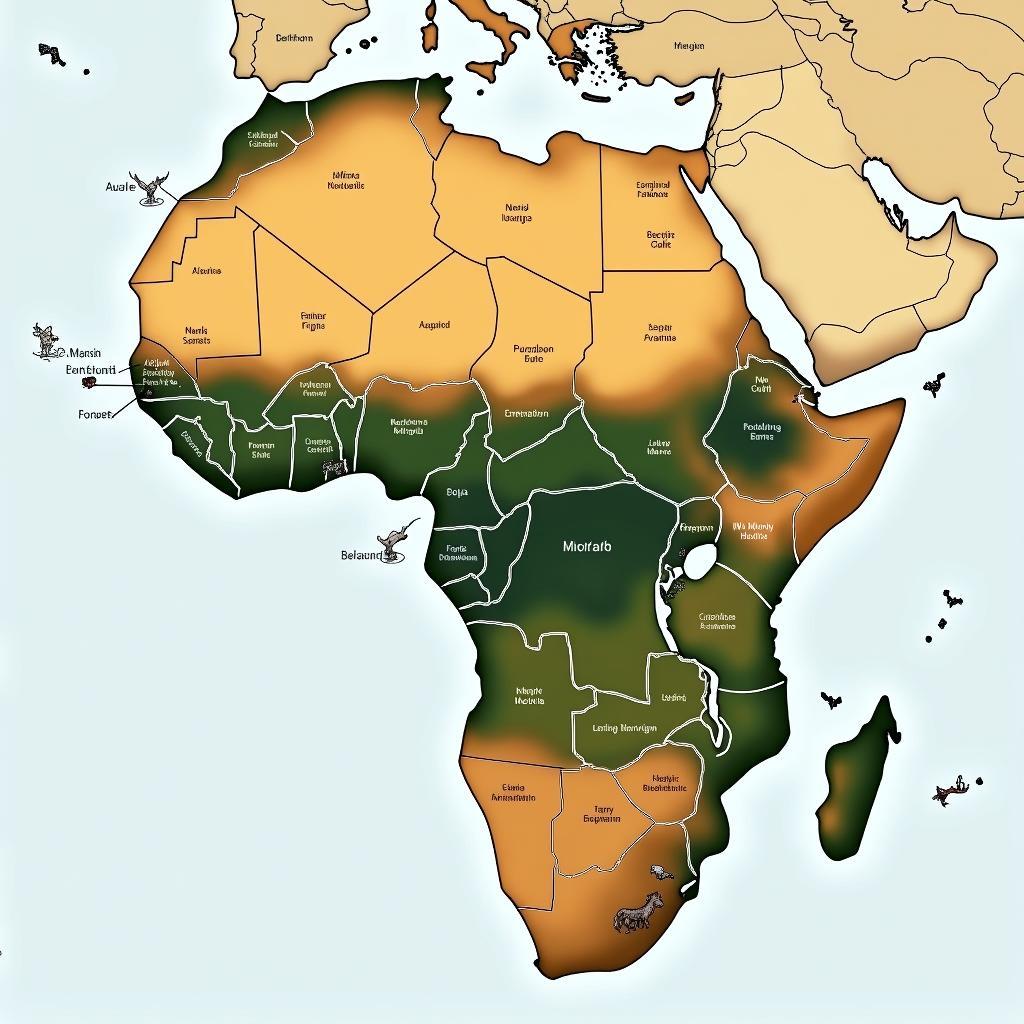The Haunting Image: Understanding the “African Kid Vulture”
The “African Kid Vulture” photograph, a Pulitzer Prize-winning image by Kevin Carter, sparked global outrage and ignited a conversation about famine, poverty, and the role of photojournalism in Africa. This image, taken during the 1993 famine in Sudan, depicts a young, emaciated child struggling to reach a feeding center, while a vulture lurks nearby. african kid and vulture This powerful image became a symbol of the devastating impact of famine and the complex ethical dilemmas faced by those who document human suffering.
Unpacking the Controversy Surrounding the “African Kid Vulture” Photo
The photograph’s impact was immediate and profound. While it raised awareness about the humanitarian crisis in Sudan, it also drew criticism towards Carter. Many questioned his decision to photograph the child rather than intervene. This debate centered around the photographer’s responsibility: to document or to assist? Was Carter exploiting the child’s suffering for a photograph? The intense scrutiny and public backlash contributed to Carter’s tragic suicide a few months after winning the Pulitzer Prize.
What Was the Real Story Behind the Photograph?
Despite the controversy, the full story behind the photograph adds layers of complexity. Reports indicate the child was wearing a bracelet indicating registration at the nearby feeding center. This suggests the child was not completely abandoned. Furthermore, the vulture was not as close as the photograph implies. The image, taken with a telephoto lens, compresses the scene, making the vulture appear closer. While the child was undoubtedly suffering, the photograph doesn’t necessarily portray a child left to die, as many initially interpreted.
The Broader Context: Famine, Poverty, and the Media’s Gaze
The “African kid vulture” photograph should be understood within the broader context of famine, poverty, and media representation in Africa. The image became a symbol of a continent plagued by suffering, perpetuating a simplistic and often inaccurate narrative. While famine and poverty are real and pressing issues in parts of Africa, the continent’s diverse cultures, vibrant societies, and stories of resilience are often overlooked. The single story of suffering can overshadow the multifaceted realities of African Life.
How Did the Photo Influence Perceptions of Africa?
The image undoubtedly contributed to a stereotypical view of Africa as a continent defined by poverty and despair. It reinforced existing biases and simplified complex issues. This highlights the power of imagery and the responsibility of the media to present nuanced and balanced portrayals. While raising awareness about critical issues is crucial, it’s equally important to avoid perpetuating harmful stereotypes and oversimplified narratives.
Beyond the Single Story: Exploring the Richness of African Life
It’s crucial to move beyond the single story presented by the “African kid vulture” photograph. Africa is a continent of immense diversity, with rich cultures, histories, and stories waiting to be discovered. From the vibrant music scenes of West Africa to the ancient kingdoms of East Africa, the continent offers a tapestry of experiences that defy simplistic categorization.
How Can We Engage with Africa in a More Meaningful Way?
Engaging with Africa requires a commitment to understanding its complexities and nuances. It means seeking diverse perspectives, supporting local initiatives, and challenging stereotypes. It also means recognizing the agency and resilience of African communities. By moving beyond the single story, we can appreciate the full spectrum of human experience on this vibrant continent. african child and vulture
Conclusion: Learning from the Past, Looking to the Future
The “African kid vulture” photograph serves as a powerful reminder of the devastating impact of famine and the ethical complexities of photojournalism. While the image itself has a complicated legacy, it can be a catalyst for critical reflection and a starting point for a more nuanced understanding of Africa. By acknowledging the complexities of the past, we can work towards a future where Africa’s diverse stories are heard and appreciated.
Frequently Asked Questions:
- Who took the “African kid vulture” photograph? (Kevin Carter)
- When was the photograph taken? (1993)
- Where was the photograph taken? (Sudan)
- Why was the photograph controversial? (Ethical concerns about the photographer’s role)
- What is the significance of the photograph? (Raises awareness about famine and media representation)
- How does the photograph contribute to stereotypes about Africa? (Presents a singular narrative of suffering)
- How can we learn from the photograph’s legacy? (Engage with Africa in a more nuanced and informed way)
For any assistance or inquiries, please contact us at +255768904061 or kaka.mag@gmail.com. You can also visit our office located at Mbarali DC Mawindi, Kangaga, Tanzania. Our customer support team is available 24/7.




